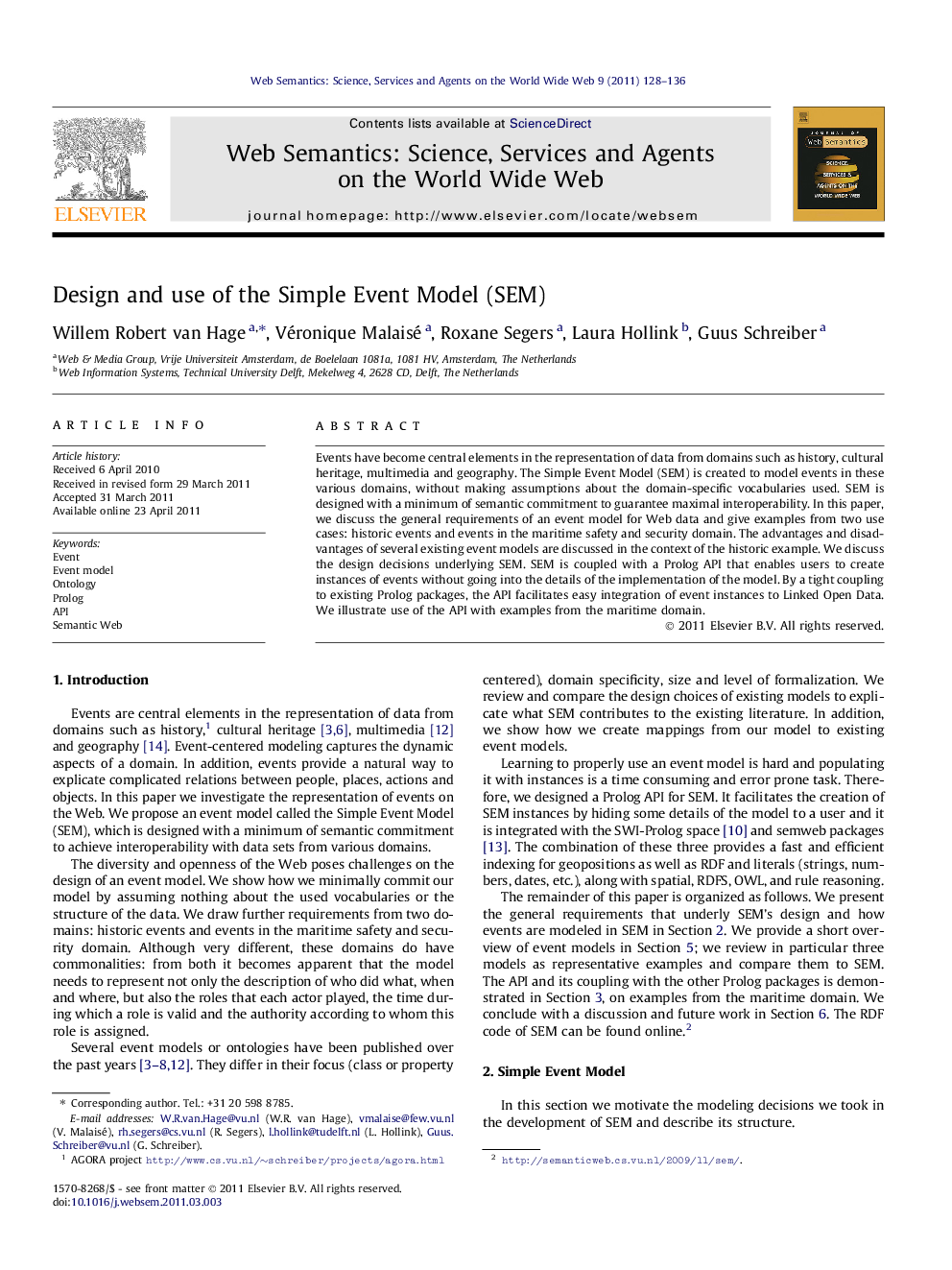| Article ID | Journal | Published Year | Pages | File Type |
|---|---|---|---|---|
| 557758 | Web Semantics: Science, Services and Agents on the World Wide Web | 2011 | 9 Pages |
Events have become central elements in the representation of data from domains such as history, cultural heritage, multimedia and geography. The Simple Event Model (SEM) is created to model events in these various domains, without making assumptions about the domain-specific vocabularies used. SEM is designed with a minimum of semantic commitment to guarantee maximal interoperability. In this paper, we discuss the general requirements of an event model for Web data and give examples from two use cases: historic events and events in the maritime safety and security domain. The advantages and disadvantages of several existing event models are discussed in the context of the historic example. We discuss the design decisions underlying SEM. SEM is coupled with a Prolog API that enables users to create instances of events without going into the details of the implementation of the model. By a tight coupling to existing Prolog packages, the API facilitates easy integration of event instances to Linked Open Data. We illustrate use of the API with examples from the maritime domain.
